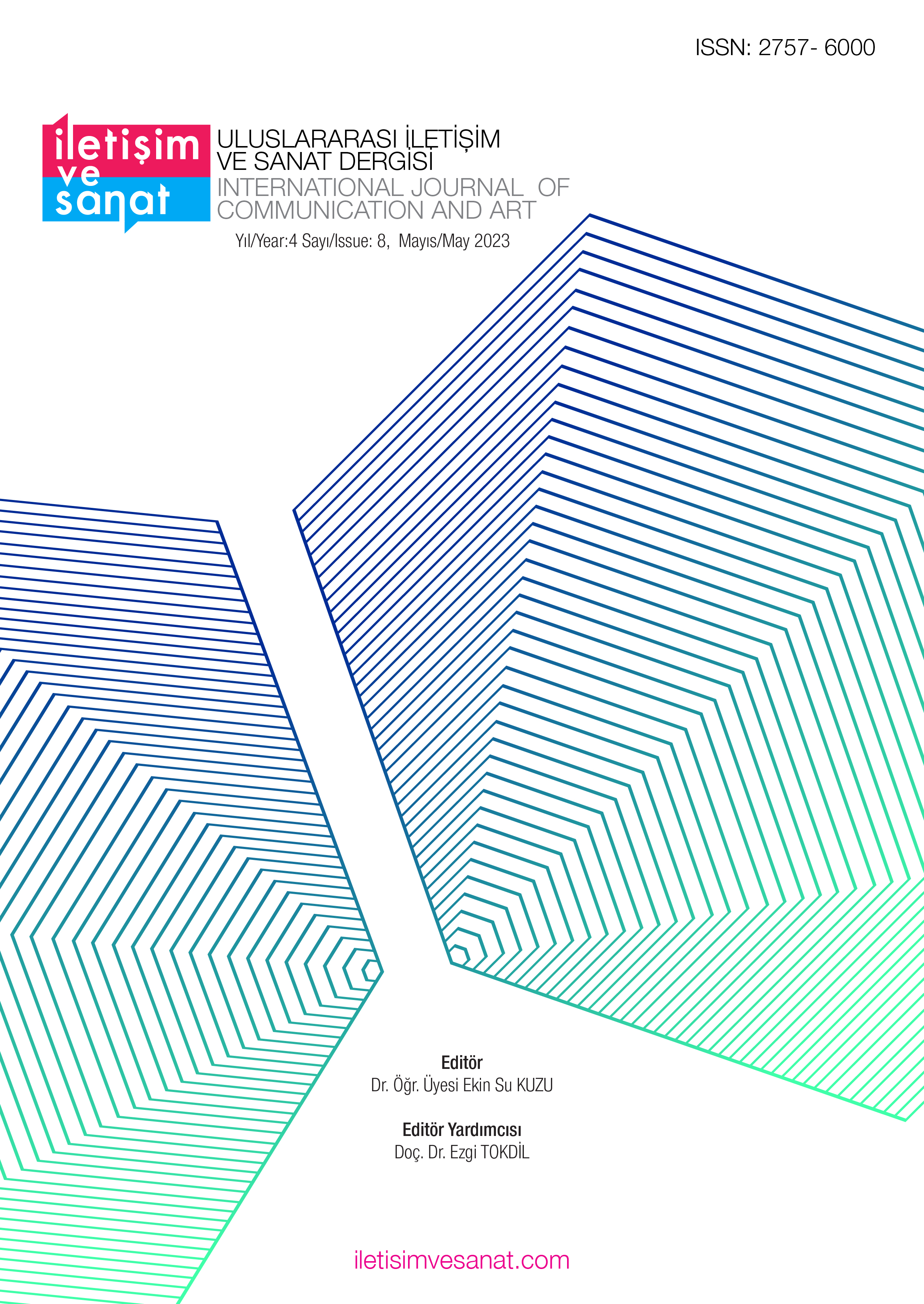Author :
Abstract
Özet
Milano Dükü Ludovico Sforza’nın, 1495 yılında Santa Maria Dele Grazie kilisesi duvarına yapılması için Rönesans’ın önemli sanatçılarından Leonardo Da Vinci’ ye sipariş verdiği "Son Akşam Yemeği" tablosu; İsa’nın çarmıha gerilmeden önce havarileriyle paylaştığı anın betimlendiği sadece döneminin önemli bir sanat eseri değil, bunun yanı sıra insanlık tarihi bağlamında enigmatik yapısıyla her dönem merak ve ilgi uyandıran önemli bir yapıt olmuştur.
Erwin Panofsky’nin 20. yüz yılın ilk dönemlerinde yoğun çalışmaları sonrasında ortaya koyduğu sanat eseri çözümleme yöntemlerinden ikonografi ve ikonoloji, sanat tarihi için ehemmiyetli bir konuma sahiptir. Toplamda üç bölümden oluşan bu yöntemin ilk kısmını “doğal konu”, ikinci kısmını “danışıklı konu” ve üçüncü kısmını ise içsel anlam olarak tanımlanan “içerik” kısmı oluşturmaktadır. İkonografik çözümlemede özellikle biçimin analizi için olayın geçtiği dönemin özelliklerinin göz önünde bulundurularak anlaşılması, en ince ayrıntısına kadar sorgulanması ve yorumlanmasıdır. Bu çalışma ile sanat eserinin oluştuğu dönemin kültürel nitelikleri, sanatçının üslubunu ve kültürel ortamın sanat yapıtına katkısını belirlemek amaçlanmıştır.
Keywords
Abstract
Abstract
Ludovico Sforza, Duke of Milan, ordered Leonardo Da Vinci, one of the most important artists of the Renaissance, to make the "Last Supper" painting on the wall of the Santa Maria Dele Grazie church in 1495; It is not only an important work of art of its period, depicting the moment Jesus shared with his apostles before the crucifixion, but also an important work that has always aroused curiosity and interest with its enigmatic structure in the context of human history.
Erwin Panofsky's 20. iconography and iconology, one of the methods of analyzing works of art that he revealed after intensive studies in the first periods of the hundred years, have an important position for art history. The first part of this method, which consists of three parts in total, is the “natural subject”, the second part is the “consulted subject” and the third part is the “content” part, which is defined as the inner meaning. In iconographic analysis, especially for the analysis of form, it is to understand the event by taking into account the characteristics of the period in which it took place, to question and interpret it down to the finest detail. With this study, it is aimed to determine the cultural characteristics of the period in which the work of art was composed, the artist's style and the contribution of the cultural environment to the work of art.
